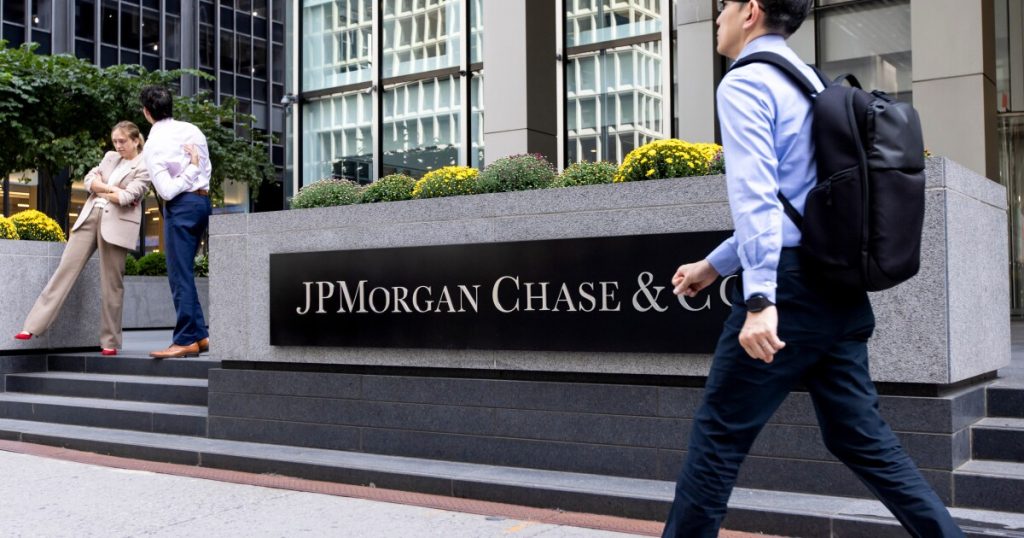At
Wells and Goldman were among the large banks that announced dividend increases on Tuesday in response to more favorable results in the Federal Reserve’s annual tests. But the two megabanks also said that their current stress capital buffers, which the Fed calculated last summer, will be revised downward.
The banks’ decisions to return more capital to shareholders — and in some cases, their success in persuading the regulators to revisit earlier calculations — were emblematic of the progress that the industry has made in reducing the impact of the stress tests.
“The large banks’ capital levels remain strong, and investors should continue to expect that any excess capital that cannot be redeployed into growing the companies’ core businesses either organically or through acquisition will eventually be returned to shareholders,” RBC Capital Markets analyst Gerard Cassidy wrote in a note Tuesday.
He predicted that more robust stock buyback plans will be announced, and existing buyback plans will be used more aggressively, once
Meanwhile, statements by top banking executives on Tuesday made clear that their push for stress-test reform will continue.
Goldman Chairman and CEO David Solomon said in a written statement that the Fed has expressed its aim to make
Similarly,
“We look forward to future proposals from the Federal Reserve on stress test models and scenarios that will increase transparency and address longstanding issues with the current SCB framework,” Dimon said in a statement.
The banks’ announcements on Tuesday came four days after the Fed said the 22 banks it examined this year
This year’s test wasn’t as severe as last year’s, and banks’ fundamental earnings have improved over the past 12 months. Still,
The Fed found that in its worst-case scenario, banks’ aggregate common equity Tier 1 capital ratio would decline by up to 1.8%, compared with up to 2.8% last year.
What follows is a look at the announcements Tuesday from nine of the stress-tested banks, eight of which said they plan to increase their dividends.
JPMorganChase
The nation’s largest bank said that, under the current stress test framework, its required common equity tier 1 capital ratio decreased from 12.3% to 11.5%, as its stress capital buffer will drop to the regulatory minimum of 2.5%.
The $4 trillion-asset company announced plans to roll out a new $50 billion common share repurchase plan, though it didn’t offer a timeline for when it will redistribute that capital.
Wells Fargo
In addition, regulators revised the 2024 number down to 3.7% due to what Wells called “the correction of modest errors” in the Fed’s “loss projections related to corporate and first lien mortgage loans.”
On the heels of those announcements, Wells disclosed that it plans to increase its third-quarter dividend by 12.5% to 45 cents per share.
Goldman Sachs
Goldman reported one of the largest stress capital buffer decreases across the banks tested this year. The Wall Street bank said that its SCB would fall to 3.4%, a decrease of nearly three percentage points from last year.
Goldman also said that its current SCB, assessed by the Fed after the 2024 stress tests, has been reduced from 6.2% to 6.1%. Last year, Goldman reported one of the larger jumps in its stress capital buffer.
When the new SCB takes effect in the fall, the bank’s Common Equity Tier 1 ratio requirement will be 10.9%, down from its current 13.6% minimum. As of the first quarter, that ratio was about 15% at Goldman.
The bank upped its dividend by 33% from $3.00 to $4.00 per share.
Bank of America
After this year’s stress tests,
U.S. Bancorp
U.S. Bancorp moved to increase its dividend by 4% to 52 cents per share after disclosing that the Fed set its 2025 stress capital buffer at 2.6%.
The 2025 result represents a drop from the Minneapolis company’s current buffer of 3.1%.
“The results of this year’s stress test demonstrate that we are well-capitalized, have a healthy balance sheet and remain prepared to manage potential industry stress and withstand a severe economic downturn,”
Truist Financial
Truist said it will maintain its current dividend and share repurchase plans after the Fed set its preliminary stress capital buffer at 2.5%. The Fed had also set Truist’s 2024 buffer at 2.8%.
The buffer, when added to the Basel III minimum common equity tier 1 ratio of 4.5%, results in a minimum CET1 ratio of 7%, well below Truist’s current ratio of 11.3%.
“Truist’s 2025 annual stress test results again demonstrate the benefits of our diverse business mix and prudent and disciplined risk management culture,” Chairman and CEO Bill Rogers said in a press release.
PNC Financial
PNC appeared to be interpreting the Federal Reserve’s decision to hold its stress capital buffer steady at 2.5% as a vote of confidence.
BNY
BNY plans to increase its quarterly dividend as its stress capital buffer remains flat.
The New York-based
CEO Robin Vince said his bank’s test results proved its “ability to support clients through extreme economic stress scenarios.”
State Street
State Street expects to give its shareholders an 11% boost to their dividends, raising the payout to $0.84 per share.
“The results of the Federal Reserve’s stress test reaffirm State Street’s robust financial strength and our ability to support clients through a range of severely adverse economic conditions,” CEO Ron O’Hanley said in a statement.

